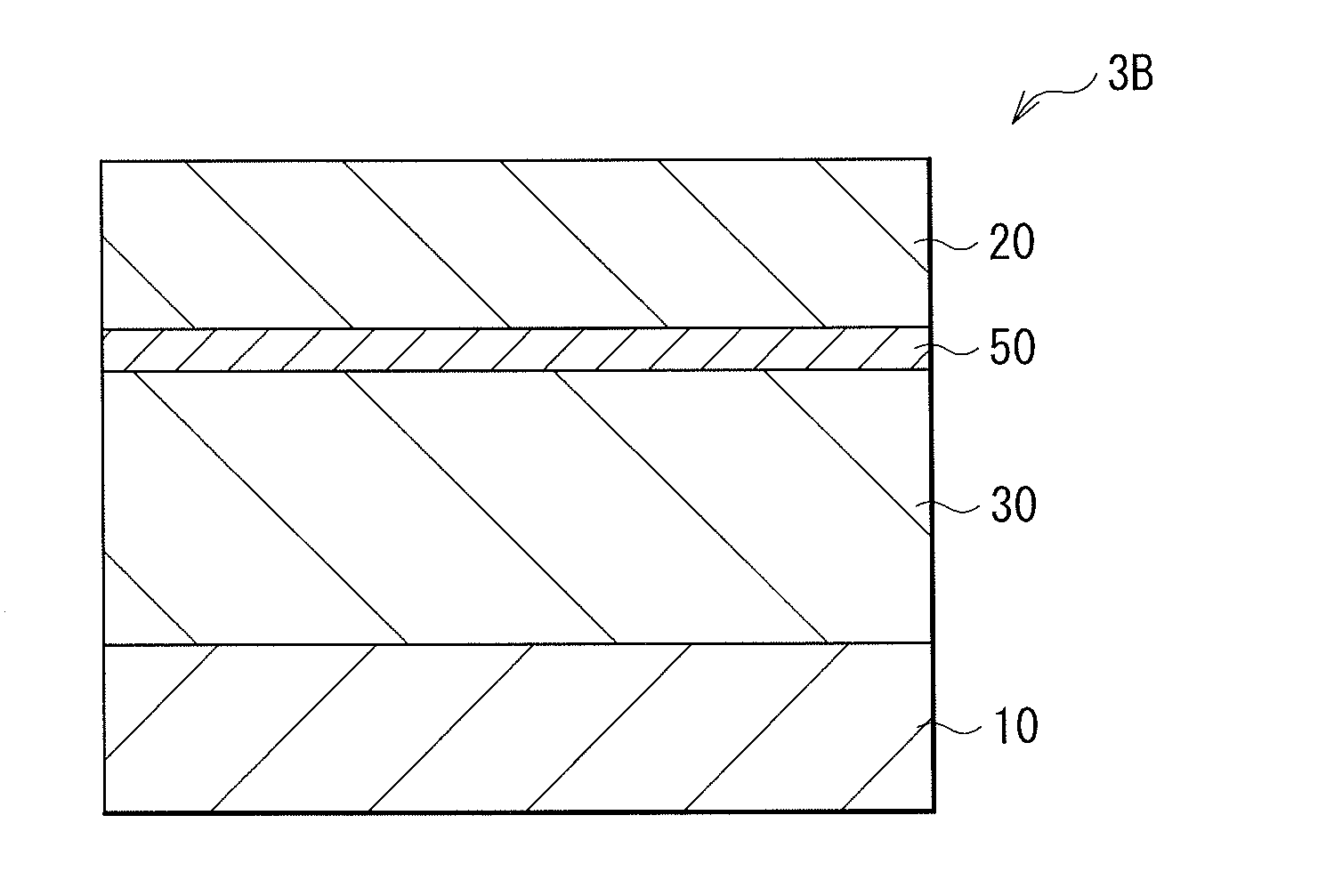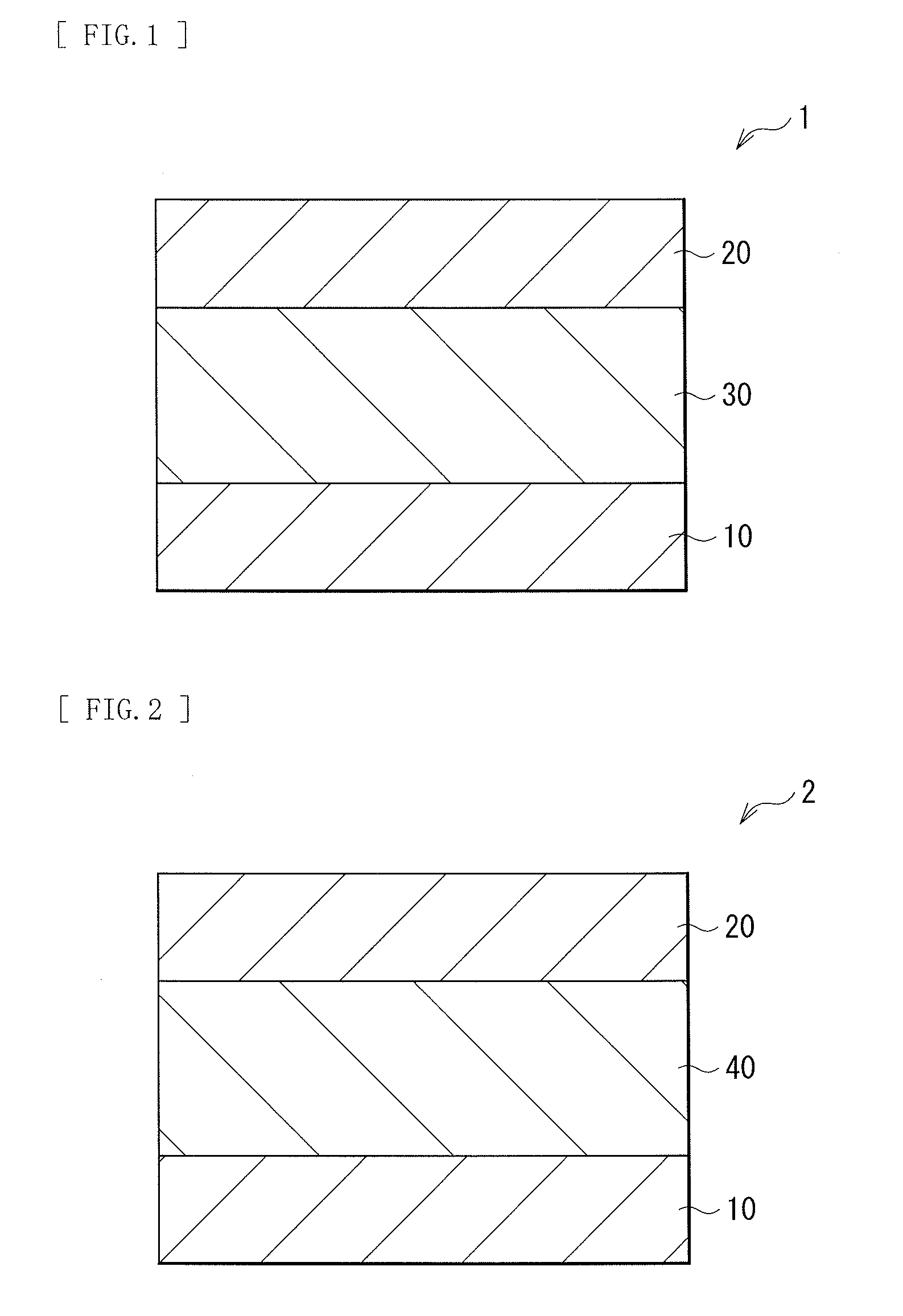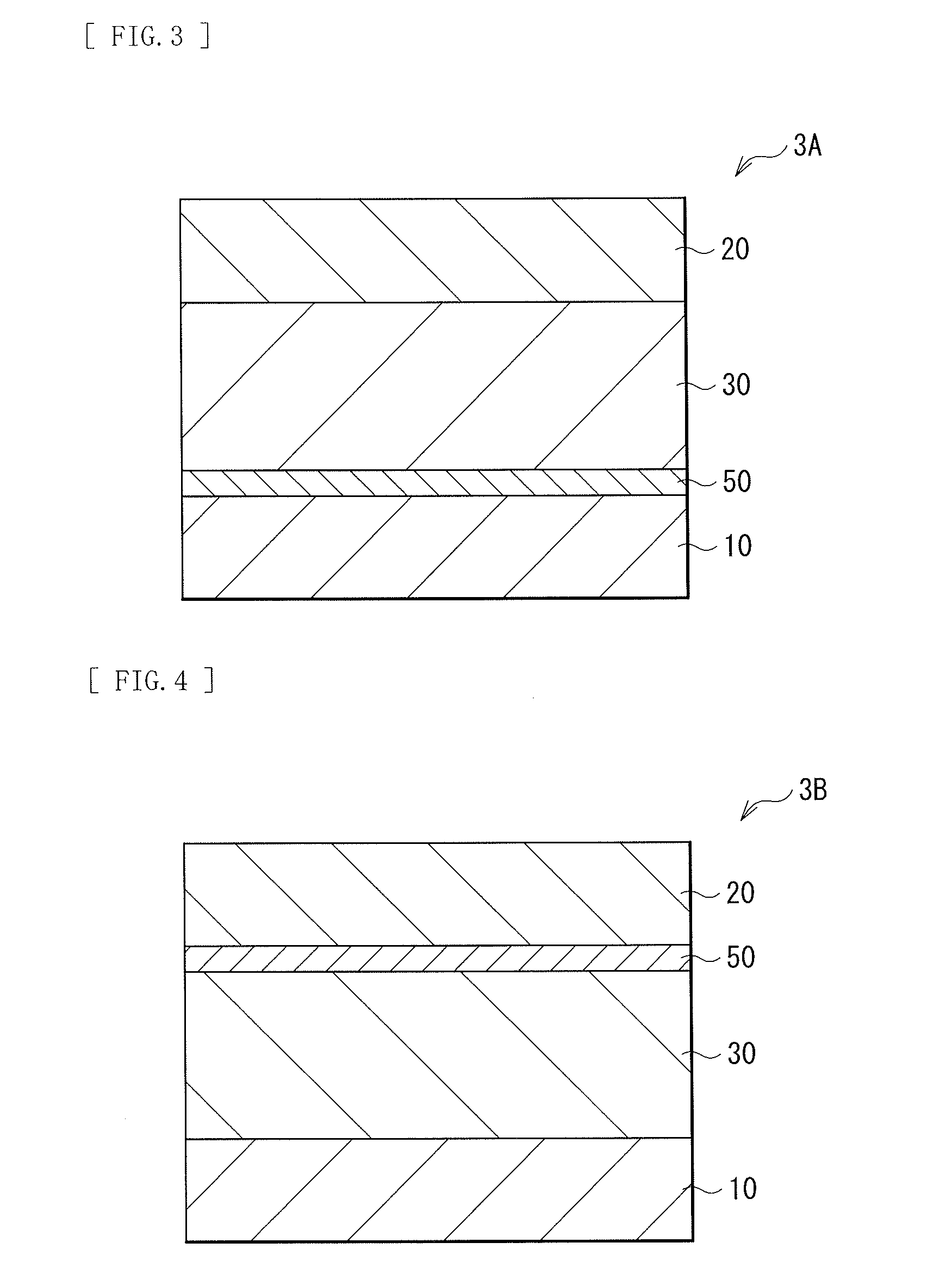Switch device and storage unit
- Summary
- Abstract
- Description
- Claims
- Application Information
AI Technical Summary
Benefits of technology
Problems solved by technology
Method used
Image
Examples
first embodiment
1. First Embodiment
[0064]FIG. 1 illustrates a cross-sectional configuration of a switch device 1 according to a first embodiment of the disclosure. The switch device 1 is adapted to selectively operate a certain storage device (a storage device 6Y; refer to FIG. 7) of a plurality of storage devices arranged in a memory cell array with, for example, a so-called cross-point array configuration illustrated in FIG. 7. The switch device 1 (a switch device 6X; refer to FIG. 7) is coupled in series to the storage device 6Y (more specifically, a storage layer 70), and includes a lower electrode 10 (a first electrode), a switch layer 30, and an upper electrode 20 (a second electrode) in this order. It is to be noted that the switch device 1 is adapted to change its resistance state upon application of a predetermined voltage without phase change (between an amorphous state and a crystalline phase).
[0065]The lower electrode 10 may be made of a wiring material used in a semiconductor process. ...
second embodiment
2. Second Embodiment
[0087]FIG. 2 illustrates a cross-sectional configuration of a switch device 2 according to the second embodiment of the disclosure. As with the above-described switch device 1, the switch device 2 is adapted to selectively operate a certain storage device of a plurality of storage devices arranged in a memory cell array with a so-called cross-point array configuration. As with the foregoing first embodiment, the switch device 2 includes the lower electrode 10, a switch layer 40, and the upper electrode 20 in this order.
[0088]The switch layer 40 in this embodiment includes a Group 16 element of the periodic table, more specifically, a chalcogen element such as S, Se, and Te, and further includes an alkaline-earth metal such as Mg, Ca, and Sr, a Group 13 element of the periodic table such as Al and Ga, or a rare earth element such as Y and lanthanoids. These elements are included to be bonded to the chalcogen element, thereby forming a chalcogenide such as MgTe, Ca...
third embodiment
3. Third Embodiment
[0094]FIG. 3 illustrates a cross-sectional configuration of a switch device 3A according to the third embodiment of the disclosure. As with the above-described switch device 1, the switch device 3A is adapted to selectively operate a certain storage device of a plurality of storage devices arranged in a memory cell array with a so-called cross-point array configuration. The third embodiment differs from the foregoing first embodiment in that the switch device 3A includes the lower electrode 10, a high-resistance layer 50, the switch layer 30, and the upper electrode 20 in this order, and the high-resistance layer 50 is formed between the lower electrode 10 and the switch layer 30.
[0095]As with the foregoing first embodiment, the switch layer 30 includes a Group 16 element of the periodic table, more specifically, a chalcogen element such as S, Se, and Te, and further includes one or more kinds selected from Si, B, and C that are metalloid light elements, and one o...
PUM
 Login to View More
Login to View More Abstract
Description
Claims
Application Information
 Login to View More
Login to View More - R&D
- Intellectual Property
- Life Sciences
- Materials
- Tech Scout
- Unparalleled Data Quality
- Higher Quality Content
- 60% Fewer Hallucinations
Browse by: Latest US Patents, China's latest patents, Technical Efficacy Thesaurus, Application Domain, Technology Topic, Popular Technical Reports.
© 2025 PatSnap. All rights reserved.Legal|Privacy policy|Modern Slavery Act Transparency Statement|Sitemap|About US| Contact US: help@patsnap.com



